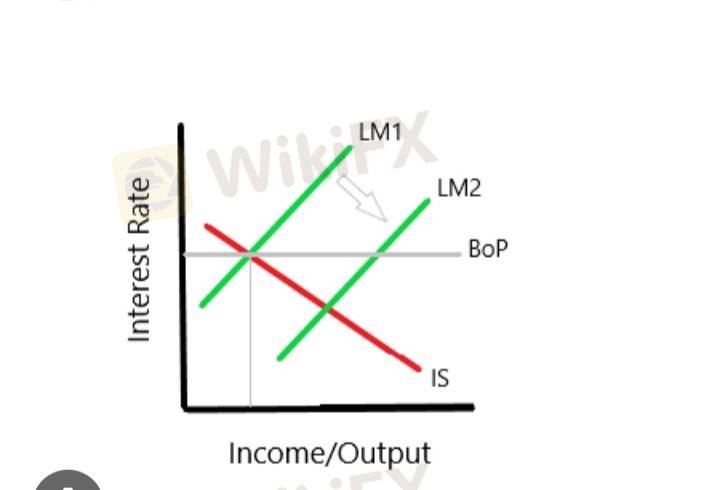
2025-02-14 20:51
इंडस्ट्रीEconomic Models: Strengths and Weaknesses
#firstdealofthenewyearastylz
Economic models are simplified representations of economic systems, used to analyze and predict economic behavior. Here are some common economic models, their strengths, and weaknesses:
1. Classical Model
- *Assumptions:* Flexible prices and wages, full employment, and no government intervention.
- *Strengths:* Simple and intuitive, assumes efficient markets.
- *Weaknesses:* Ignores market failures, doesn't account for unemployment.
2. Keynesian Model
- *Assumptions:* Sticky prices and wages, government intervention, and aggregate demand drives economic activity.
- *Strengths:* Explains economic fluctuations, emphasizes role of government.
- *Weaknesses:* Overly relies on government intervention, neglects supply-side factors.
3. Monetarist Model
- *Assumptions:* Money supply drives economic activity, and markets are efficient.
- *Strengths:* Emphasizes role of monetary policy, simple and easy to understand.
- *Weaknesses:* Overlooks fiscal policy, neglects non-monetary factors.
4. Marxist Model
- *Assumptions:* Class struggle, exploitation, and the labor theory of value.
- *Strengths:* Highlights income inequality, emphasizes social and institutional factors.
- *Weaknesses:* Overly simplistic, neglects individual incentives and market mechanisms.
5. Neoclassical Model
- *Assumptions:* Rational behavior, efficient markets, and optimal resource allocation.
- *Strengths:* Provides microfoundations for macroeconomics, emphasizes individual incentives.
- *Weaknesses:* Overly relies on assumptions of rationality, neglects institutional and social factors.
6. Institutional Model
- *Assumptions:* Economic activity influenced by social and institutional factors.
- *Strengths:* Highlights the role of institutions, emphasizes social and cultural context.
- *Weaknesses:* Difficult to formalize, neglects individual incentives and market mechanisms.
7. Behavioral Model
- *Assumptions:* Humans exhibit bounded rationality, and psychological factors influence economic decisions.
- *Strengths:* Provides a more realistic representation of human behavior, emphasizes the role of psychology.
- *Weaknesses:* Difficult to formalize, neglects institutional and social factors.
Each economic model has its strengths and weaknesses, and economists often combine elements from multiple models to better understand complex economic phenomena.
लाइक करें 0
FX4036555298
ट्रेडर
गर्म सामग्री
इंडस्ट्री
विदेशी मुद्रा कहानी Forex story
इंडस्ट्री
User Survey Questionnaire
इंडस्ट्री
User Survey Questionnaire
इंडस्ट्री
User Survey Questionnaire
इंडस्ट्री
User Survey Questionnaire
इंडस्ट्री
Participate in the survey and claim your contribution rewards!
फोरम केटेगरी

प्लेटफॉर्म

एक्सहिबिशन

एजेंट

भर्ती करना

EA

इंडस्ट्री

मार्केट

इंडेक्स
Economic Models: Strengths and Weaknesses
 हाँग काँग | 2025-02-14 20:51
हाँग काँग | 2025-02-14 20:51#firstdealofthenewyearastylz
Economic models are simplified representations of economic systems, used to analyze and predict economic behavior. Here are some common economic models, their strengths, and weaknesses:
1. Classical Model
- *Assumptions:* Flexible prices and wages, full employment, and no government intervention.
- *Strengths:* Simple and intuitive, assumes efficient markets.
- *Weaknesses:* Ignores market failures, doesn't account for unemployment.
2. Keynesian Model
- *Assumptions:* Sticky prices and wages, government intervention, and aggregate demand drives economic activity.
- *Strengths:* Explains economic fluctuations, emphasizes role of government.
- *Weaknesses:* Overly relies on government intervention, neglects supply-side factors.
3. Monetarist Model
- *Assumptions:* Money supply drives economic activity, and markets are efficient.
- *Strengths:* Emphasizes role of monetary policy, simple and easy to understand.
- *Weaknesses:* Overlooks fiscal policy, neglects non-monetary factors.
4. Marxist Model
- *Assumptions:* Class struggle, exploitation, and the labor theory of value.
- *Strengths:* Highlights income inequality, emphasizes social and institutional factors.
- *Weaknesses:* Overly simplistic, neglects individual incentives and market mechanisms.
5. Neoclassical Model
- *Assumptions:* Rational behavior, efficient markets, and optimal resource allocation.
- *Strengths:* Provides microfoundations for macroeconomics, emphasizes individual incentives.
- *Weaknesses:* Overly relies on assumptions of rationality, neglects institutional and social factors.
6. Institutional Model
- *Assumptions:* Economic activity influenced by social and institutional factors.
- *Strengths:* Highlights the role of institutions, emphasizes social and cultural context.
- *Weaknesses:* Difficult to formalize, neglects individual incentives and market mechanisms.
7. Behavioral Model
- *Assumptions:* Humans exhibit bounded rationality, and psychological factors influence economic decisions.
- *Strengths:* Provides a more realistic representation of human behavior, emphasizes the role of psychology.
- *Weaknesses:* Difficult to formalize, neglects institutional and social factors.
Each economic model has its strengths and weaknesses, and economists often combine elements from multiple models to better understand complex economic phenomena.
लाइक करें 0
मैं भी टिप्पणियाँ करना चाहता हूँ
प्रस्तुत
0टिप्पणियाँ

अभी तक कोई टिप्पणी नहीं है। पहले एक बनाओ।

प्रस्तुत
अभी तक कोई टिप्पणी नहीं है। पहले एक बनाओ।